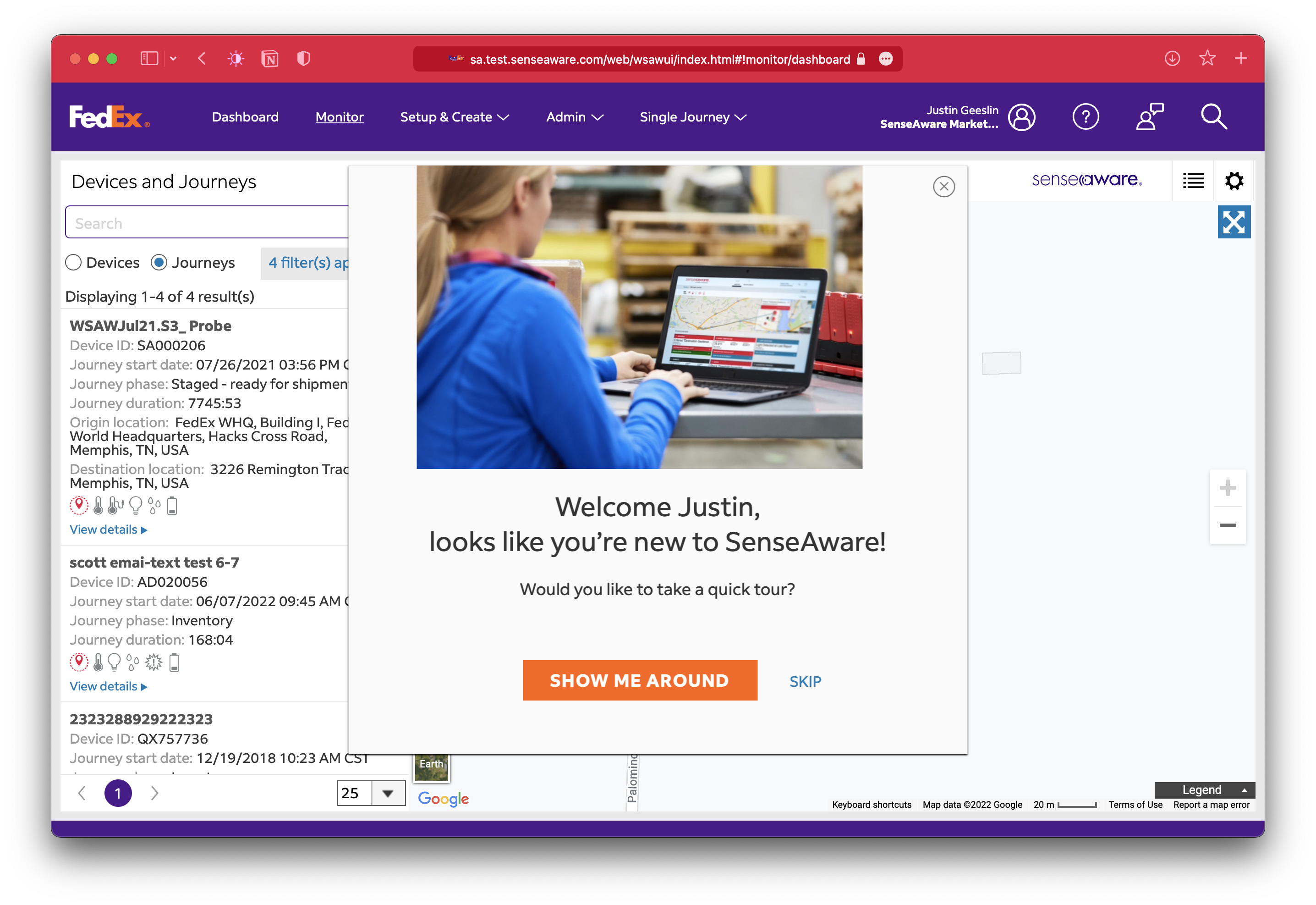Onboarding - FedEx SenseAware
An onboarding flow for the new user of sensor-based logistics

My Responsibilities
- Ideate, brainstorm, and develop content with UX Lead and customer support
- Prototype, user test, and integrate feedback
- Demo and share design decisions with stakeholders
Constraints
- For a new user, unfamiliar with SenseAware and with sensor-based logistics products
- To explain basic “core concepts” of SenseAware
- To get “up and running” without the need for or in complement to an in-person implementation.
- Should pertain to only the features every user role can access.
Ideate: What happens in an in-person customer implementation?
Every customer implementation is tailored to the customer for the most part, but we found each training session begins with a few basic things you need to know to use the product. From in-person implementations, these became our “core concepts”.
Beyond the “core concepts”, an implementation is a walkthrough of basic features, too, where you watch someone perform the tasks. We wanted to emulated this. These guided walkthroughs became our “page tours”.
Ideate: Content & Core Concepts
- We’ll walk through the Core Concepts first, then take the page tour.
- There are 3 Core Concepts that a new user should know.
- We’ll limit the Page Tour to only elements that the lowest user role can access in the name of keeping it basic for the new user.
- The Welcome message should be Fun and Friendly.

Prototype: Lo-fi 1



Prototype: Hi-fi



Test: User Test
In these user tests, we’re trying to discover if they learned the core concepts and the Monitor screen. And so, we walked them through the Onboarding flow and then asked the the following questions.
- Verbally describe: What is a Journey?
- Verbally describe: What is an Alert?
- Verbally describe: How would you Monitor only Devices?
- Verbally describe: How would you Monitor only Journeys with Alerts?
- Verbally describe: How would you show items in a list?
- Please view the environmental data of a Journey.
- 1 How confident are you in your answer?
- Verbally describe: What do the different colors of the environmentals mean? (Red, Yellow, Green, and Blue)
- Please view an Alert icon on the map
- Verbally describe: What is a Geofence?
- Please view the Destination Geofence on the map.
- Verbally describe: How would you create a new Journey?
- Verbally describe: How would you setup devices for the first time?
- Number 1,2, and 9 test the core concepts. Below are word clouds created from the verbal answers we received.



We’re also leaning into research that says you shouldn’t make the Onboarding process too long. And so we asked users how they felt about the length. More users said it was too short than too long which was surprising. Most users said it was neither too short or too long.

Empathize: What next?
- Consider a Next Steps prompt at then end that links to other Page Tours such as the oft-asked for setting up of a device, or other tasks pertaining to these core concepts.
- Changing Skip to Ask me Later One piece of feedback received, so that they are prompted at a later time. Maybe now, at the first prompt, isn’t a good time.
- Some people mentioned that some customers will begin, not with shipping, but with device and hardware setup. Future interactions might feature more hardware setup steps, but these steps did not figure prominently in our research into customer implementations.
Measure
- Did the number of support tickets on basic topics decrease?
- Are there differences in users who finish onboarding and those who never start?